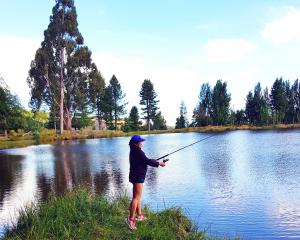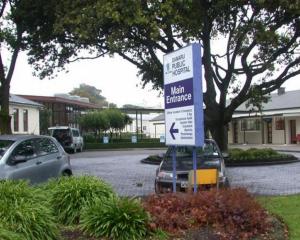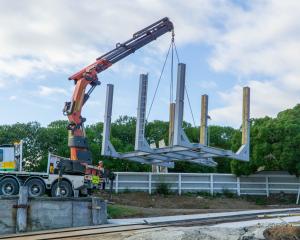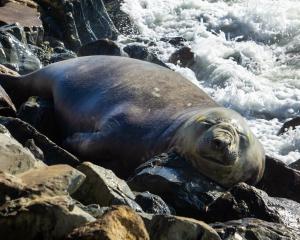The shallow 376ha coastal lagoon and its surrounding wetlands sit only metres from the Pacific Ocean, separated by the shingle bank that stretches along the coast.
While regionally and nationally significant, including culturally to Ngai Tahu, the area has tended to fly under the radar, little known to all but local people and enthusiasts for the area.
In past decades it has been under threat but in recent years its significance has become recognised.
It represents about a quarter of all saline-estuarine wetland areas in South Canterbury and it could qualify for international significance.
It has received a boost by being recognised as a flagship project under the Canterbury Water Management Strategy, promoted by the Lower Waitaki-South Coastal Canterbury water management zone committee established last year by Environment Canterbury (ECan).
Mr Murphy, a Glenavy farmer and chairman of the Morven-Glenavy-Ikawai Irrigation Company, is chairman of that zone committee.
The committee put up the Wainono Lagoon and its surrounding wetlands for flagship project status, one of three so far promoted in Canterbury under the strategy.
The strategy's regional committee has granted the lagoon $120,000 over the next five years towards a project estimated to cost about $220,000.
The rest of the funding will come from the zone committee and outside sources such as grants.
Funding has been tentatively allocated to protecting and enhancing the lagoon margins (weed control, stock-exclusion fencing, native planting and wetland reinstatement) and tributaries (willow removal, weed control, fencing and planting).
The aim is to change the future of the lagoon, which is under threat from weeds, grazing, reduced water quality, land reclamation, new irrigation and drainage.
Other groups in recent years, ranging from Ngai Tahu to the Department of Conservation and local landowner groups, have already been working to preserve and enhance the area.
Recognition as a flagship project brings all these efforts together and provides a major boost in funding.
Mr Murphy said now that funding had been received, the project would be discussed by the zone committee at its next meeting in Oamaru on March 3, making decisions on how to proceed.
"We want to try to make it an attraction in the area - for example, greater access and education," he said.
Last year an open day was held to showcase the lagoon.
It attracted the maximum of 100 people it could cater to - and there was a waiting list.
"Wainono is of real interest to the community. There is a real opportunity to get people involved," he said.
Ngai Tahu has both a practical and spiritual relationship with the lagoon.
Apart from its obvious cultural, wildlife and native fishery values, the lagoon is a site of national importance because of its diversity.
It has been identified as a priority site for protection and restoration.
It contains extensive aquatic, salt marsh and freshwater wetland habitats that, together, support a range of native vegetation, native fish and large numbers of wading birds and waterfowl.
Threatened species include the Canterbury mudfish, long fin eel, giant kokopu and lamprey.
Migratory, coastal and wetland birds include white heron, royal spoonbill, wrybill, black swan, Canada goose, grey teal and pied stilt.
The lagoon is also interconnected with other areas of value such as dry native shrubland and dune vegetation on the beach barrier, the Waihao River box lagoon, wetlands and tributary streams.
Restoring and protecting these connected areas would also benefit the long-term health and vitality of the Wainono Lagoon.
A variety of work is already under way, or identified, to protect and enhance the lagoon and its associated ecosystems.
Weed control has been identified as a priority, allowing significant regeneration of native species and restoring the lagoon to a more natural state.
Excluding stock from inter-connected wetlands and tributary streams is also required.
The flagship project would build on and complement existing and proposed work, accelerating outcomes.
Land around the lagoon is in a variety of ownership - private freehold, Queen Elizabeth II conservation covenants, Central South Island Fish and Game Council reserve and public conservation land.
A small area was returned to Maori under the Ngai Tahu Claims Settlement Act 1998.
Organisations involved in restoration activities include Te Runanga o Waihao, Waihao-Wainono Water Users' Group, the Department of Conservation, ECan, New Zealand Fish and Game Council, Queen Elizabeth II National Trust, Forest and Bird, the Waimate District Council, Waimate Walkways and the Meridian Energy Ltd-South Canterbury Irrigation Trust Hunter Downs irrigation scheme.
Wainono Lagoon
• Location: About 8km northeast of Waimate, separated from the Pacific Ocean by the coastal shingle bank.
• Area: About 376ha.
• Depth: Usually less than 1m.
• Water: Brackish, low salinity, fresh water.
• Significance: Regional and national. Culturally to Ngai Tahu.
• Threats: Weeds, stock grazing, land reclamation, tracks, vegetation clearance, reduced water quality and potential irrigation.
• Protection: Department of Conservation Wainono Lagoon Conservation Area to protect the natural environment of the lagoon and development as a traditional fishery resource with Ngai Tahu.
• Habitat for waterfowl, migratory birds, coastal birds and native fish.











